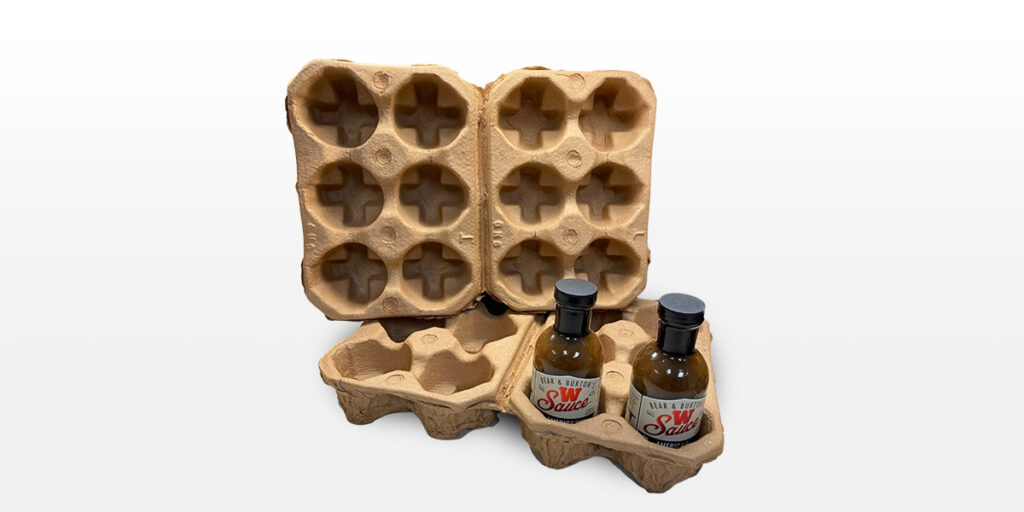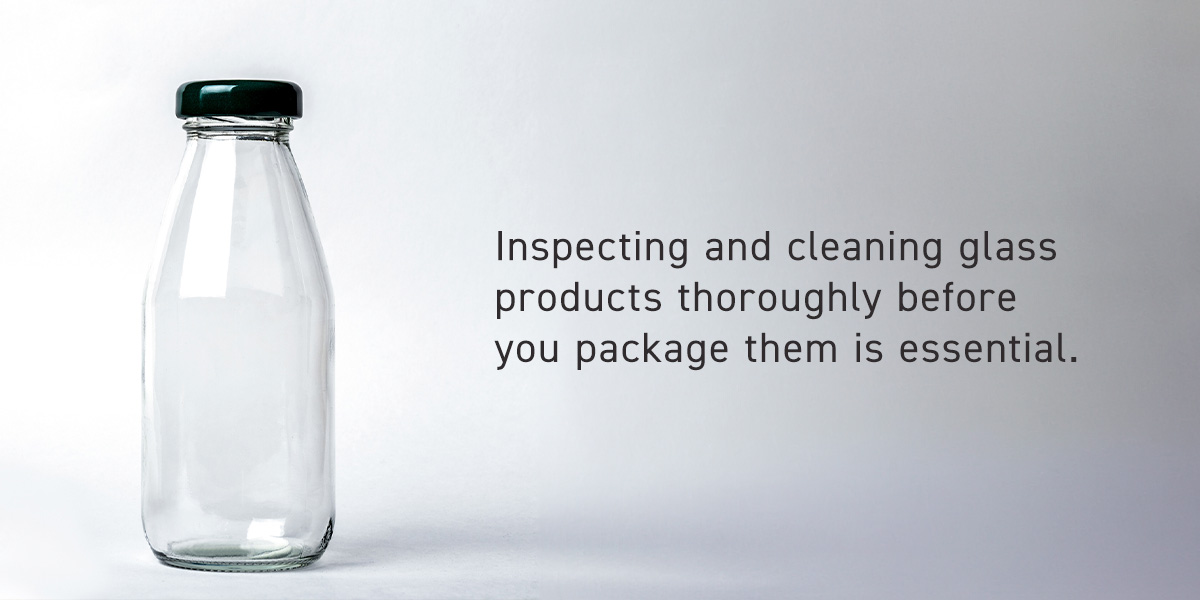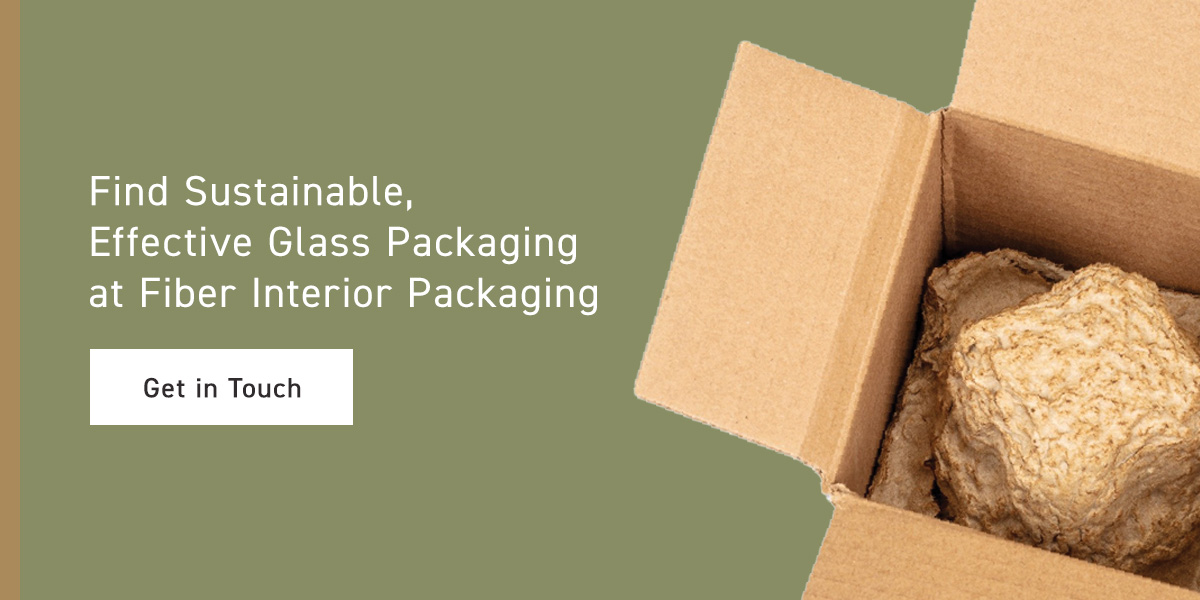
Glassware is the most commonly damaged item during shipping, yet many consumers prefer it for liquids and other perishables. If you’re looking for safe, efficient and sustainable packaging for glassware, molded fiber inserts are likely your first choice. They’re an efficient alternative that streamlines shipping operations and cuts costs — all while solidifying your reputation as a quality-focused and environmentally responsible business.
Consumer expectations are changing, and 39% say that the environmental impact of packaging is very important in their purchasing decisions. Using molded fiber inserts makes sense for sustainability and product quality. Explore actionable tips for packing glassware using molded fiber inserts so you can ensure sustainable, safe shipping while limiting waste and returns.
What Are Molded Fiber Inserts?
Molded fiber is a sustainable, protective packaging solution made from various paper products and natural fibrous materials. It’s popular for fragile items like glass due to its cushioning and ability to retain shape during storage and shipping.
The inserts protect the packaging from the top and bottom, helping prevent damage during shipping.
The Benefits of Molded Fiber Inserts for Shipping Glassware
Consumers prefer glass containers for various reasons, including recyclability and purported health benefits. Over a third of consumers in a recent poll say they choose glass because it better preserves health and keeps products safer for longer. Glass is difficult to transport despite these benefits. Many businesses seek sustainable, cost-effective packaging options. Molded fiber inserts exceed these requirements, offering the following benefits:
- Sustainable alternative: Molded fiber is an eco-friendly solution that meets consumer sustainability requirements. Recycled paper is 100% biodegradable.
- Customizable packaging: You can customize molded fiber inserts for any product, providing optimal protection during storage and shipping.
- Reduced time and money: You simply need to insert the bottom piece, place the products into the mold and insert the top piece, saving time and labor costs. As molded fiber is compact and lightweight, it also saves shipping costs without sacrificing protection.
- Superior cushioning and shock absorption: Molded fiber maintains its structure during shipping, reducing damage and the associated returns.
5 Tips for Shipping Glassware Using Molded Fiber Inserts
Although molded fiber inserts reduce the risk of damage during shipping, packaging your glassware correctly is essential to ensure it works correctly. The following packaging tips for glassware can help your business prevent unnecessary breakage, save money and meet consumer expectations.
1. Choose the Right Molded Fiber Insert
Various types of molded fiber exist for different applications. Your first step is to choose the right inserts for shipping fragile items like glass. Look for custom packaging designed and tested to ensure it offers the highest possible protection. Some considerations when choosing the right packaging material include:
- Durability: As glass is highly breakable, select thicker molded inserts to protect it. Custom molded solutions hold each product securely and are durable enough to tolerate shipping demands.
- Product weight: When shipping glass containers that hold liquids like cooking oils, the package is heavy. Molded pulp is the best option as it can handle weights over 50 pounds.
- Shipping expenses: Weigh the product with and without packaging to understand the costs involved in shipping to the end user. You may be able to find lighter inserts that offer the same protection.
2. Prepare the Glassware Correctly
Inspecting and cleaning glass products thoroughly before you package them is essential. Dust, debris and fingerprints can scratch the surface, and overlooked cracks or chips can worsen during shipping. Start with a close inspection of each item for existing damage. Then, wipe each item with a glass cleaner and let it dry completely before placing it in the insert, as moisture can lead to water spots.
Traditional shipping processes include wrapping glass items individually in paper and Bubble Wrap. Molded fiber inserts eliminate this extra step as they’re customized to fit your products.
3. Choose the Right Box Size
Customized molded fiber inserts allow even weight distribution of glass items to prevent pressure points. All your team needs to do is correctly position the glassware within the inserts. However, when there’s too much space in the box, the glassware can move around inside, exponentially increasing the chances of breakage.
When the package is underfilled, it can collapse when containers are placed on top, crushing the glass components. Molded fiber can only hold the items inside when the outer packaging is the correct size, as it then acts as a filler to keep the glassware secure.
4. Seal and Label the Package
Even the perfect packaging encounters challenges if the people handling it are unaware of the contents. Ensure everyone who touches the package handles it carefully by applying bright-colored labels that mark it as fragile. Add labels like “this way up” to ensure the products are handled correctly.
Labels should also have a symbol alongside the words, especially for international shipping, where the recipients may not understand English. In addition, make sure the packing is securely sealed and reinforced with strong packaging tape.
5. Take Extra Precautions With Liquids
When shipping liquids in glass containers, you must contend with additional challenges, including the increased risk of breakage and the potential for leakage and spills. Take the following steps to reduce those risks:
- Use specialized inserts: Choosing inserts that work with the specific liquid you want to ship is essential. Look for inserts with the right porousness, weight and rigidity.
- Opt for double-seal containers: Avoid the glassware’s contents leaking onto the inserts. You can use sealing caps or shrink-wrap sleeves to double-seal the containers and add an extra layer of protection against leakage.
- Protect the contents from extreme temperatures: Many liquids are sensitive to temperature changes during storage and shipping. Discuss temperature control with your shipping provider and incorporate insulation into your shipping materials during the warmer months.
Find Sustainable, Effective Glass Packaging at Fiber Interior Packaging
By prioritizing protective packaging, your business can reduce breakage and ensure delicate items arrive safely and sustainably. Fiber Interior Packaging provides an affordable and sustainable solution to glassware packaging challenges. Using our products is easy and effective, helping you save on costs while delivering the ultimate value to your customers.
Our molded fiber packaging is made of corrugated and newsprint, making it 100% recyclable and demonstrating our commitment to sustainability. We design and engineer packaging solutions that use fewer materials and reduce your overall environmental impact. Contact us to learn more about how we can simplify glassware shipping and help you meet your sustainability goals today!







